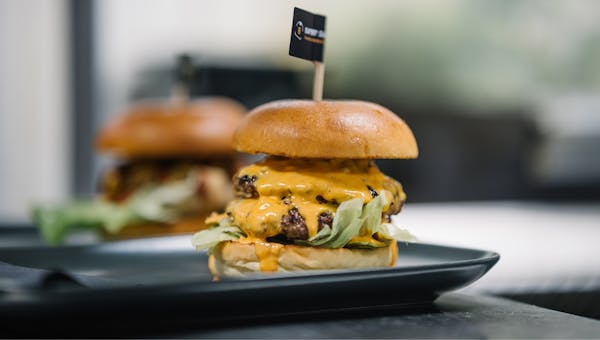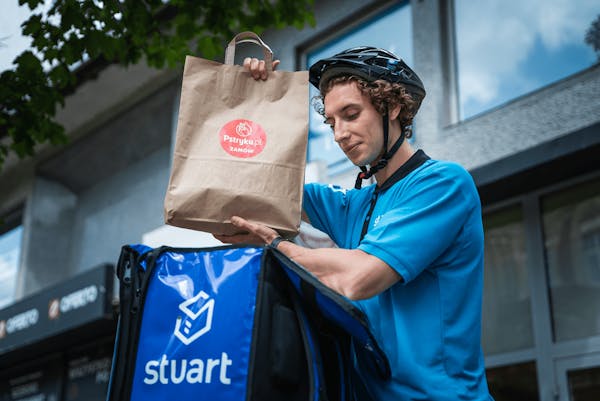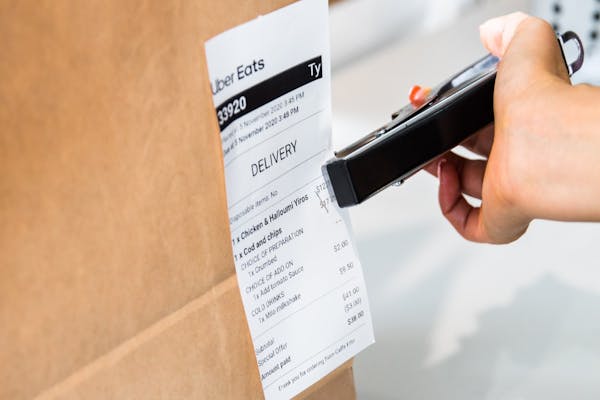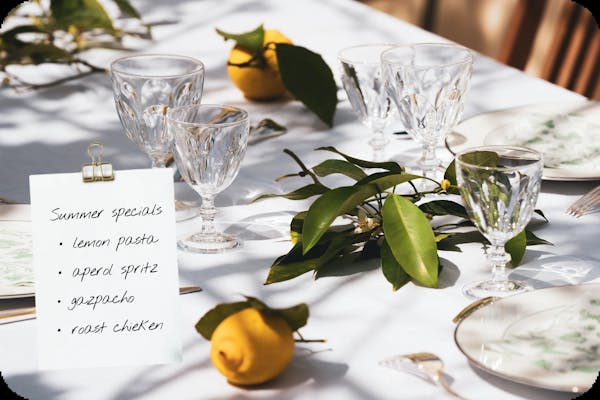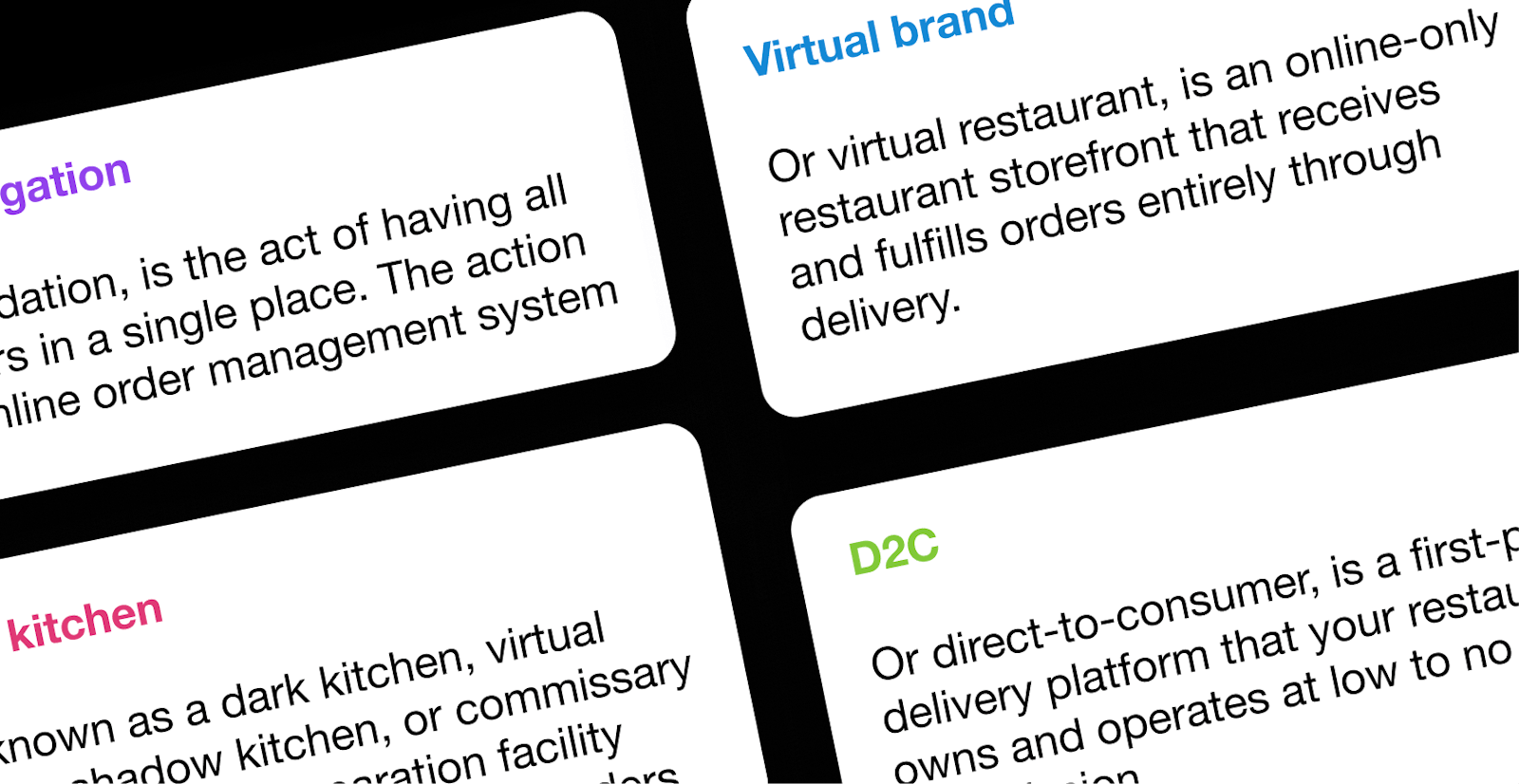
This is a complete restaurant glossary of every term restaurateurs need to know in 2023.
Restaurant professionals are expected to know and remember a lot of things. From food prep instructions, to table numbers, to kitchen lingo, to restaurant delivery and online ordering terms.
As your partner in all things delivery, the team at Otter has curated a restaurant glossary every tech-savvy restaurateur needs to know. This glossary is easy to understand, and you can share it with your team to ensure theyre up-to-date on all the relevant delivery lingo.
In this glossary, well cover all the terms you need to know in regard to orders, your kitchen, restaurant operations, restaurant logistics, restaurant finance, and restaurant innovation.
We made sure to keep the definitions short & sweet so you feel comfortable using the terms in your everyday life moving forward.

A
Average Basket Size: [In delivery] the average value of the items sold in one purchase.
Analytics: Analytics by Otter is a dashboard that helps you take advantage of performance data by providing you with easy-to-understand, actionable insights on how your restaurant is doing. With analytics, you’re able to optimise your business to improve your sales, operations, marketing performance, and more.
B
BOH/FOH: back-of-house & front-of-house. BOH is any non-customer facing area of your restaurant. FOH is any area of your restaurant that customers will interact with during their experience.
Bottom line: also known as net income, the bottom line is what your restaurant makes after all of your expenses have been deducted from your total revenue.
C
Cash flow: the amount of cash being transferred into and out of your restaurant. Cash inflow consists of the money received from customers and other financing sources like loans.
Commission: [In delivery] the amount you’re required to pay a delivery app for being listed & selling on their platform. When it comes to third-party apps, commission rates for restaurants generally fall in the 15-30% range.
Cooked to order: a dish cooked following specific customer instructions. Not pre-prepared.
Cost of goods: or COGS, is the total cost of all the ingredients you must use to prepare everything on your menu (down to the garnish of cilantro or ketchup packet).
Counter service: a counter service model is one in which customers order directly from the counter and pick up their food when you call their name or number.
Couriers & Logistics: Couriers by Otter is a solution that lets you automatically send orders to your choice of delivery partner for flexible, high-quality options, without the manual work and headache.
Cover: the number of people served during a given period of time. It differs from a table as it represents each customer individually.
D
D2C: or direct-to-consumer, is a first-party delivery platform that your restaurant owns and operates at low to no commission.
Delivery cycle time: [in delivery] the time between when an order is placed and when an order is delivered.
Delivery radius: [in delivery] the specific distance that your restaurant (or a delivery app when applicable) is willing to go to deliver food to customers.
Direct Orders: Direct Orders by Otter is a commission-free ordering platform that allows restaurants to grow their sales without growing their spending. Direct Orders gives your restaurant a unique link that brings customers directly to your online ordering system, with no app required.
Downtime: [in delivery] the amount of time that you are “closed for business” on your online storefronts due to a rush, staffing issues, etc. Higher downtime = fewer orders.
E
Eighty-six (86):removing a specific dish from your menu because you’ve run out of one of the key ingredients.
G
Ghost kitchen: a ghost kitchen, also known as a dark kitchen, virtual kitchen, shadow kitchen, or commissary kitchen, is a food preparation facility that prepares meals for delivery orders. You can think of a ghost kitchen as a restaurant without dine-in seating or a commercial kitchen optimised for fulfilling delivery orders. A ghost kitchen can be used to launch an entirely new restaurant or to increase an existing restaurant’s reach by creating new “virtual storefronts” in different areas.
H
Handoffs: Handoffs by Otter is a best-in-class solution that prevents overcrowding at your pickup counter and allows your staff to confirm every order going out the door.
Holding: holding is the temperature and time requirements for a specific item. It’s critical for your team to know the proper temperature to hold a particular menu item to ensure that the food you prepare is safe for your customers to eat.
I
Inventory: the literal definition of inventory refers to anything within your restaurant that costs the business money, but when restaurateurs refer to inventory, they are generally referring to the ingredients coming in and going out of your kitchen.
L
Lead time: the time it takes to prepare an item from beginning to end.
Live Alerts: Live Alerts by Otter is a solution that notifies you whenever your online stores go down so you never miss an order.
M
Menu Management: Menu management by Otter is a best-in-class solution that allows you to make menu updates, add or remove items, change prices, and more for any brand or location across delivery platforms.
Menu modifier: [in delivery] customisation for menu items. Modifiers can be created in groups with options that can be added as part of the order (choice of pizza crust: Deep Dish, Thin Crust, Cheese-stuffed).
Mise en place: “to put in place or gather” in French, mise en place refers to the act of getting your ingredients, pans, and tools ready before the food preparation begins.
Missed orders: [in delivery] orders not accepted by the restaurant or cancelled by a customer.
N
Net profit margin: your business’ profitability ratio – how much revenue you earn compared to how much it costs you to earn that revenue.
O
On the fly: an order that needs to be prepared right away.
Online food ordering: ordering food from a restaurant through a website or application.
Online order management system: [in delivery] an online order management system is an all-in-one solution that consolidates all of your digital orders – from third-party apps like Uber Eats + your restaurant’s direct ordering platform – into a single tablet to make managing delivery simpler.
OOS: out of stock. When a specific ingredient is not available due to issues with forecasting of needs, supply chain problems, or increased demand. This became a major point of contention during the pandemic.
Order aggregation: [in delivery] order aggregation, or consolidation, is the act of having all your orders in a single place. Think of order aggregation as the action that an online order management system owns.
Order issues: [in delivery] an order issue occurs when there is a missing or incorrect item in a customer’s order, when their order arrives cold, damaged, or late: essentially, when a customer clicks “help” on their delivery app of choice to submit a complaint, it is likely due to an order issue.
Order Management: Order Manager by Otter is a one-tablet solution that brings together delivery apps so you can manage your online and offline orders from a single place.
Overhead: the added factors that go into calculating food costs at your restaurant to ensure you make a profit like electricity bills, labour, and shipping costs.
P
Point of sale (POS): Point of Sale refers to the time and place - or the point - that a sales transaction is completed. A restaurant POS system is the software and hardware that restaurants use to run their entire business.
Promotions: [in delivery] a deal or discount within the delivery apps designed to increase the number of orders you receive. When running promotions with an app like Uber Eats, you are usually expected to cover the cost of the discount + a small fee to the third-party app company. While these fees can add up, the increased number of orders received from promotions can still result in a higher profit.
Promotions by Otter: Promotions by Otter is a best-in-class marketing solution that automatically creates, runs, and optimises your restaurant’s promotions on delivery apps.
S
Shelf life: the length of time for which a particular ingredient or item remains usable. When the shelf life is up, an ingredient is effectively expired.
T
Table turnover rate: how long customers spend in your restaurant from the moment they sit down to the moment they leave. If three different parties occupy a specific table during a specific meal (e.g. dinner) your average table turnover rate for the dinner rush would be 3.
Third-party apps: [in delivery] also known as food delivery platforms, third-party apps are desktop and/or mobile applications that customers use to order food. Examples include Uber Eats, Deliveroo, and Just Eat.
U
Upsell: influencing or persuading diners to select a higher margin item and/or add-ons.
Uptime: [in delivery] the amount of time that you are “open for business” on delivery apps. Higher uptime = more orders.
V
Virtual brand: or virtual restaurant, is an online-only restaurant storefront that receives and fulfills orders entirely through delivery. While virtual restaurants don’t necessarily have a branded brick-and-mortar, they are generally operated by existing brick & mortar restaurants – which is what makes them different from ghost kitchens.
If you made it to this point, you’re well on your way to becoming a walking restaurant encyclopaedia. Remember to share this glossary with your team to ensure everyone in your restaurant is speaking the same language.
